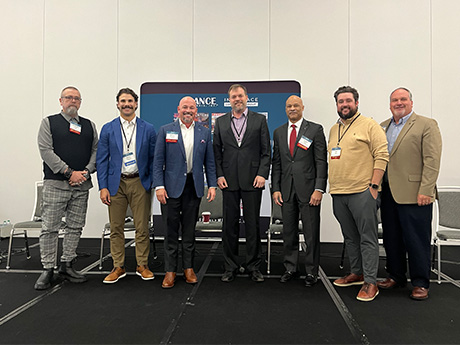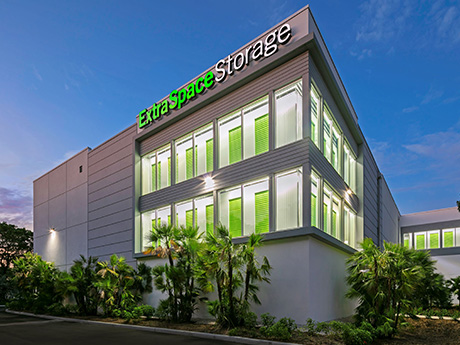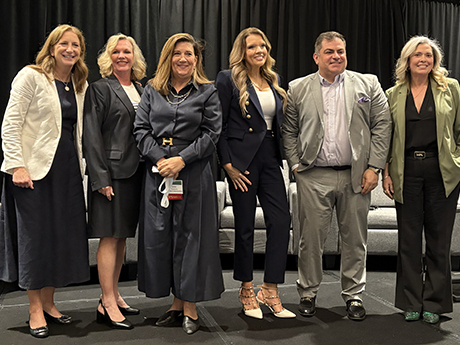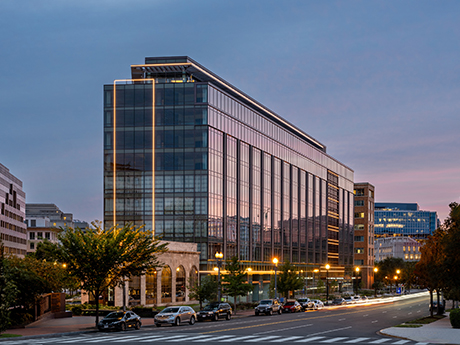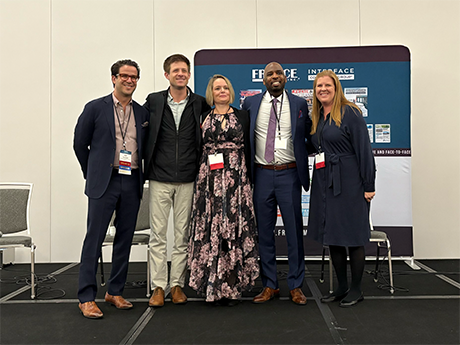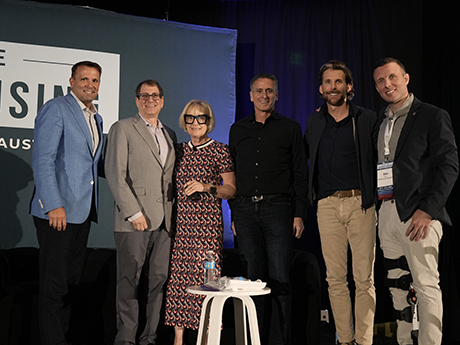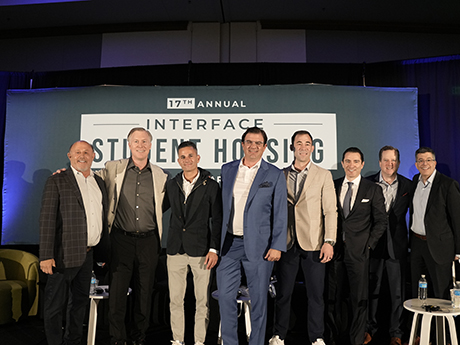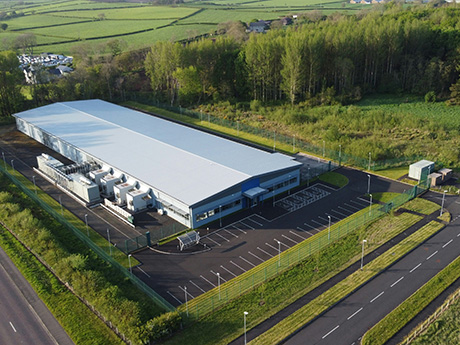By Fernanda Ogazon, president and CEO, American Art Resources Incorporating art into commercial real estate is more than just decoration. It’s a strategic investment in tenant wellness, satisfaction and overall asset performance. Evidence-based design (EBD) plays a crucial role in effectively integrating art into spaces, especially in environments like healthcare, hospitality and corporate offices. By relying on credible research, EBD helps ensure that the art chosen contributes to the stakeholders’ specific goals. What It Means According to the Center for Health Design, EBD is the process of basing decisions about the built environment on reliable research to achieve the best possible outcomes. In healthcare spaces, the right artwork can provide comfort, reduce stress and anxiety and support healing. For example, patients in intensive care units may suffer from a condition that researchers have termed “ICU Syndrome,” which is characterized by hallucinations, delusions, psychotic episodes and sleep disturbances that have no direct link to the illness itself. Art for ICU patient rooms must therefore be very clear and completely unambiguous so as not to aggravate these symptoms. Nature photographs with sunlight and full-spectrum color are successful choices for these settings because they are reality-based. The role of art in non-patient areas …
Features
Affordable Housing Developers Aim to Control What They Can Control, Say InterFace Panelists
by John Nelson
ATLANTA — Interest rates. Tariffs. Natural disasters. These three factors alone frighten any developer, let alone those who are tasked with delivering our nation’s affordable housing supply. Just to get to the ribbon-cutting ceremony, developers have an uphill climb. They have to obtain the land outright or in a ground lease agreement, navigate the permitting and entitlement processes, overcome any neighborhood pushback, raise equity and borrow the necessary capital and then build these communities on time and on budget. Editor’s note: InterFace Conference Group, a division of France Media Inc., produces networking and educational conferences for commercial real estate executives. To sign up for email announcements about specific events, visit www.interfaceconferencegroup.com/subscribe. “We try to stay in control of what we’re in control of,” said Christopher Byrd, Southeast region development director of LDG Development, an affordable housing developer based in Louisville, Ky. “As long as we are in the right markets with the right growth and the right partners, we are safe and insulated.” Byrd’s comments came while on stage during the development panel at InterFace Affordable Housing Southeast, a networking and information conference held at the Cobb Galleria Centre in Atlanta on Tuesday, May 7. Kelly Williams, vice president of …
By Maggie Stankiewicz, senior content manager, Storable The self-storage industry is expanding steadily in 2025, fueled by rising housing costs, smaller homes and changing relocation patterns. As Americans seek more flexible storage options, the market is quickly adapting — rents are dropping, technology is streamlining operations and demand is rising in new regions. According to a recent study by SelfStorage.com, the U.S. market is projected to reach $85.3 billion by 2030, pointing to continued long-term growth. Because of this sustained, projected growth, new self-storage trends are shaping how renters and operators navigate the evolving landscape. Key Trends Driving the Market As of early 2025, a few notable trends are shaping the self-storage industry: Short Vs. Long-Term While short-term storage demand is growing — especially among frequent movers — longer rentals are still the norm. The aforementioned study found that renters use their units for an average of 20 months, up from 16.5 months in 2020. Over one-third of renters planning a move in the next year say they’ll use storage for three to six months. States like Oregon, North Dakota and Mississippi have seen a notable uptick in demand, driven in part by migration from expensive metro areas. After hitting highs …
DALLAS — What’s in a name? Plenty, according to the industry professionals that operate and market active adult communities. Jane Arthur Roslovic, co-founder and CEO of Treplus Communities, says that “if anybody called [her] a senior” she’d “smack them.” Roslovic’s quip came during a panel discussion — titled “Operating and Marketing: Best Practices in Lease-Up, Sales and Programming” — at the 5th annual InterFace Active Adult conference. The daylong event took place Wednesday, May 7, at The Westin Las Colinas in Dallas. Editor’s note: InterFace Conference Group, a division of France Media Inc., produces networking and educational conferences for commercial real estate executives. To sign up for email announcements about specific events, visit www.interfaceconferencegroup.com/subscribe. Roslovic and her fellow panelists argued that the same reluctance to be branded as a “senior” extends to prospective residents of active adult communities. The key to attracting and retaining residents, the panelists insisted, is to not only provide excellent product but also understand and cater to the public’s perception of age-restricted properties. Active adult communities are age-eligible, market-rate multifamily properties with enhanced lifestyle programming, according to the National Investment Center for Seniors Housing & Care (NIC). Unlike independent living communities, active adult properties do not …
By Ashley O’Connor, executive managing director at MGAC Large-scale mixed-use developments are reshaping urban landscapes, offering opportunities to reimagine cities as more appealing places to live, work and visit. Unlike traditional single-use developments, these projects blend various real estate verticals — residential, commercial, recreational — into cohesive ecosystems. The versatility of these projects both mitigates risks during economic downturns, such as oversupply in specific sectors, and fosters resilience and adaptability, making them stand out as sustainable investments in an evolving urban environment. Enhancing Visual, Functional Landscapes The shift away from monolithic single-use buildings has transformed skylines, replacing them with dynamic, multi-purpose structures that blend into their surroundings. These projects often feature green spaces, public art installations and architectural elements that enhance aesthetics and functionality. For instance, the redevelopment of the Century Plaza Hotel in Los Angeles demonstrates how historical preservation can coexist with modern innovation. Once celebrated for its mid-century design, the property’s transformation added sleek residential towers while maintaining its iconic charm, creating a vibrant hub that reflects the city’s evolving identity. Similarly, the Etobicoke Civic Center in Toronto illustrates how well-designed mixed-use developments contribute to urban appeal. By combining civic, residential and commercial spaces into a single 800,000-square-foot …
ATLANTA — Affordable housing is facing a tumultuous second half of the year. Tariffs on building materials such as lumber, steel and aluminum are slowing development activity as they elevate construction costs. Investment sales are also likely to be impacted by unstable economic conditions in the affordable housing sector, where many transactions are conducted within a limited budget due to the nature of income restrictions for renters. Amid high costs and trade uncertainty, many investors are making the decision to stay on the sidelines or invest in markets with more stable conditions. Editor’s note: InterFace Conference Group, a division of France Media Inc., produces networking and educational conferences for commercial real estate executives. To sign up for email announcements about specific events, visit www.interfaceconferencegroup.com/subscribe. “The most experienced, best qualified buyers are being careful about what they purchase,” said Kyle Shoemaker, a managing director at Affordable Housing Investment Brokerage. The Downers Grove, Illinois-based company arranges acquisitions and dispositions of Section 8, Section 42, low-income housing tax credit (LIHTC) and tax credit housing. “The affordable housing sector was heated in 2021,” Shoemaker continued. “At that point in time, we were getting more calls than ever from multifamily investors who were interested in entering the affordable …
By Katie Sloan AUSTIN, TEXAS — The ‘State of the Industry’ panel at the 17th annual InterFace Student Housing conference held more of a trepidatious tone than heard in recent years. While pre-leasing levels and rental rates are still above historical norms, the industry is seeing a slight deceleration in pre-leasing speed and rate growth, leading some to question what the industry has in store for the year ahead. The discussion — held on April 10 in Austin, Texas — was moderated by Alex O’Brien, CEO with Cardinal Group. The best way to characterize the industry this year is hesitant according to Ryan Lang, executive vice chairman with Newmark, who believes investor reluctance is largely due to pre-leasing numbers falling a couple of points behind levels seen at this time last year. Still, levels are trending far ahead of pre-leasing levels seen in 2019, lending to confidence overall in the sector. Editor’s note: InterFace Conference Group, a division of France Media Inc., produces networking and educational conferences for commercial real estate executives. To sign up for email announcements about specific events, visit www.interfaceconferencegroup.com/subscribe. “The past two years were unprecedented from a leasing perspective with properties leasing up the fastest and with the highest rents growths …
By Hayden Spiess Investment firm and asset manager Nuveen has a dedicated “What is C-PACE?” page on its website, outlining the basics of this unique type of financing. That the firm sees such a fact sheet as necessary is unsurprising, given that within the commercial real estate industry, Commercial Property Assessed Clean Energy (C-PACE) financing carries less familiarity relative to other financing products. Anne Hill, senior vice president of Bayview PACE, says that “there are some misconceptions out there” and that there is “some confusion around the product.” Lenders say that now though, despite the fact that some misinformation and lack of awareness persist, the tool is rapidly gaining favor among borrowers that recognize its exceptional utility, especially in the volatile environment of today. Origins Originated in Berkeley, California, in 2008, commercial property assessed clean energy (C-PACE) financing is now available in 40 states throughout the country. C-PACE serves as an alternative funding source for commercial projects that qualify on the basis that they will result in reduced energy and water usage and greater building efficiency. “When the program was created, the idea was that the government wanted to allow property owners an easier way to finance energy efficiency …
By Katie Sloan AUSTIN, TEXAS — The 17th annual InterFace Student Housing conference, held April 9-11 at the JW Marriott in Austin, Texas, saw more than 1,500 student housing industry executives gather for educational sessions and networking. The conference’s first full day kicked off on April 10 with the ‘Power Panel,’ which brought together a group of high-level executives from several of the top companies in the sector to discuss their outlook for the year ahead. Moderator Peter Katz, executive managing director with Institutional Property Advisors, began the discussion by highlighting a few growing concerns in the current economic environment. Chief among them were the potential impact of global tariffs on equity and development in student housing and the possibility of an economic slowdown or even an impending recession. Editor’s note: InterFace Conference Group, a division of France Media Inc., produces networking and educational conferences for commercial real estate executives. To sign up for email announcements about specific events, visit www.interfaceconferencegroup.com/subscribe. Still, the student housing sector has proven time and time again that it is a resilient asset class. “If we look back at the global financial crisis and COVID-19 pandemic, we’ve witnessed that the student housing sector is pandemic- and recession-resistant,” said Katz. “Institutional …
Content PartnerDevelopmentFeaturesIndustrialLeasing ActivityLee & AssociatesMidwestMultifamilyNortheastOfficeRetailSoutheastTexasUncategorizedWestern
Lee & Associates: Tariffs Add to Q1 Industrial Challenges; All Sectors See Constrained Development
The end of the first quarter of 2025 saw market uncertainty in the face of new U.S. trade and tariff policies combined with an unclear geopolitical outlook, according to Lee & Associates’ 2025 Q1 North America Market Report. The effect of these concerns within the commercial real estate world are most evident in the industrial sector, which is also contending with oversupply and softening rent growth. Development is slow across property types. Retail, despite high-profile store closures in early 2025, remains historically tight on space as years of underbuilding keep availabilities near record lows. Office demand has stabilized in several major metros following years of contraction, though vacancy remains elevated. The pipeline of new construction is both drying up and favoring new types of tenants beyond traditional office spaces. Multifamily is seeing strong tenant demand in certain markets despite a flood of new deliveries. Lee & Associates has made their full market report available here (click through for detailed breakdowns and city-by-city information). The information below for the industrial, office, retail and multifamily sectors offers clarity on market-wide demand, rent growth trends and challenges likely to shape trajectories throughout 2025. Industrial Overview: Soft Markets Face Tariff Disruptions North America’s industrial markets …



